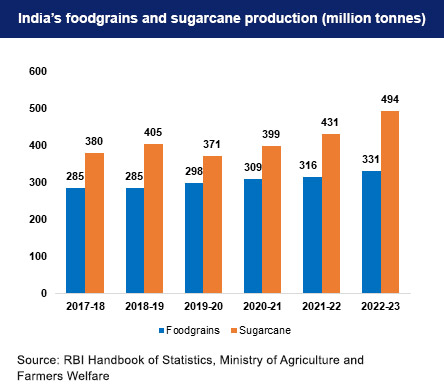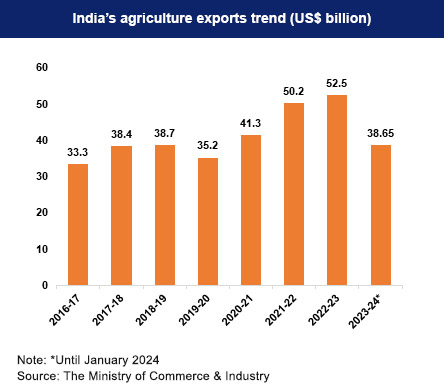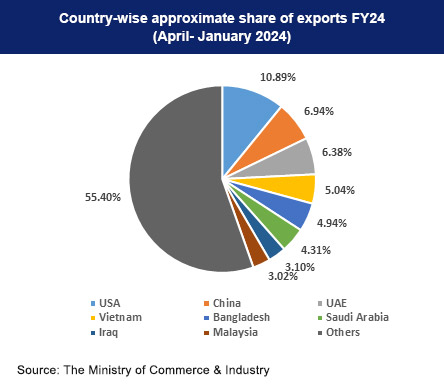The largest importers of India’s agricultural products, as of FY25 (until December 2024), were the USA, UAE, China, Bangladesh. During this period, the USA was the largest importer of Indian agricultural products at Rs. 36,117 crore (US$ 4.19 billion) with a share of 11.36% of the total exports. The USA and China were the major importers of India’s marine products.
The government of India is keen to organize virtual buyer-seller meets (V-BSM) on agricultural and food products with the major importing countries across the world to promote geographical indications (GI) registered with agricultural and processed food products in India. So far 17 V-BSMs have been organized with Kuwait, Indonesia, Switzerland, Belgium, and Iran. Similar programs have been organized for Canada (Organic products), UAE & USA (GI products), Germany, South Africa, Australia, Thailand, Oman, Bhutan, Azerbaijan, and Qatar.
The government has set up thirteen Agri-Cells in Indian embassies in Vietnam, USA, Bangladesh, Nepal, UAE, Iran, Saudi Arabia, Malaysia, Indonesia, Singapore, China, Japan, and Argentina to provide inputs on a real-time basis to improve Indian exports at these destinations by promoting trade, tourism, technology, and investment goals.








